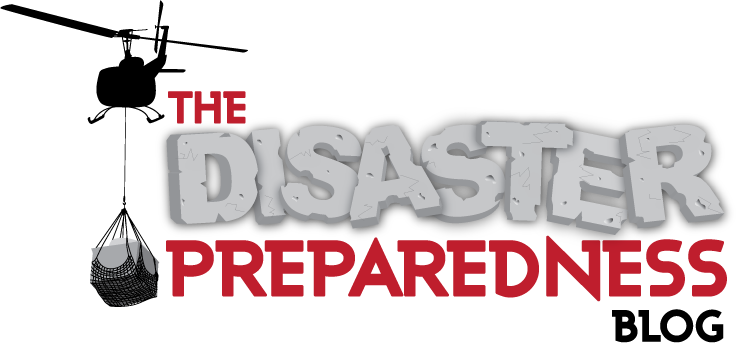How to Create a Family Emergency Plan
 Monday, July 21, 2025 at 2:00AM | |
Monday, July 21, 2025 at 2:00AM | |  Email Article
Email Article 
Disasters don't discriminate. They can hit anyone, anywhere, at any time. Whether it's a hurricane ripping through your neighborhood, an earthquake shaking the foundations of your home, a wildfire or flood forcing an immediate evacuation, having a solid family emergency plan isn't just smart; it's essential for survival. At Disaster Preparedness Blog, I've always emphasized the power of preparation to turn chaos into a manageable controlled event. With the U.S. facing ongoing natural disasters in 2025 such as severe storms and tornadoes that have already claimed at least 155 lives as of my writing this and caused widespread damage. Now is the perfect time to review this critical topic. This step-by-step guide: How to Create a Family Emergency Plan, will walk you through creating a comprehensive family emergency plan, including vital communication and evacuation strategies. We'll draw on trusted sources like FEMA and the American Red Cross, while linking back to our classic posts for deeper insights, such as ICE: In Case of Emergency - Who Do You Want Contacted? from 2008 and [Disaster Tip of the Week: Have an Out-of-State Contact from 2009.
By the end of this guide, you'll have the tools to build, practice, and refine a plan that keeps you and your loved ones safe. Let's dive in, preparation starts today.
Why a Family Emergency Plan is Important
Before we get into the steps, let's underscore why this is important. In 2025, natural disasters have already affected millions across the U.S., with events like flash floods, wildfires, and severe storms leading to billions in damages and significant loss of life. According to recent statistics, at least 35 people have died from tornadoes alone this year, and global natural disasters in 2023 affected 93.1 million people worldwide, claiming over 86,000 lives. Without a plan, families can become separated, communication can fail, and simple oversights can turn dangerous. A well-crafted emergency plan addresses these risks by outlining clear actions for alerts, evacuation, communication, and reunion. It's not just about surviving the event; it's about reuniting and recovering afterward.
Our blog has long advocated proactive steps in this area. For instance, in Disaster Tip of the Week: Set Meeting Points to Reunite With from 2019 and Disaster Tip of the Week: Setup Predetermined Meet-Up Locations from 2012, we highlighted how predefined reunion spots can prevent panic during evacuations. Now, let's build on that with a detailed, step-by-step process inspired by experts and tips from FEMA and the Red Cross.
Step-by-Step Guide to Creating Your Family Emergency Plan
Creating a family emergency plan is a collaborative process. Gather your household members, including kids, spouse, elderly relatives, and even pets' needs should be considered. Set aside and dedicate time to discuss and document your plan. Aim for a dedicated family meeting, perhaps over a weekend, to make it as thorough as possible. We'll break this into four main steps, with sub-steps, examples, and tips to make it as comprehensive as possible. Use printable templates from Ready.gov or the Red Cross to organize your notes.
Step 1: Assess Risks and Gather Information
The foundation of any plan is understanding what threats you're up against. This step ensures your plan is tailored to your location and family's unique situation.
Sub-Step 1.1: Identify Local Hazards
Research the most common disasters in your area. Use resources like FEMA's hazard maps or local emergency management websites to pinpoint risks such as floods, hurricanes, earthquakes, wildfires, or tornadoes. For example, if you live in California, prioritize earthquakes and wildfires; in Florida, focus on hurricanes and flooding. Discuss how these could impact your home, work, or school. Example: A family in the Midwest might note tornado alleys, while a coastal household prepares for storm surges.
Sub-Step 1.2: Learn About Emergency Alerts
Know how you'll receive warnings. Sign up for local alert systems like Wireless Emergency Alerts (WEA), Emergency Alert System (EAS), or apps from NOAA Weather Radio. Download the FEMA app or Red Cross Emergency app for real-time notifications. Tip: Test these systems during non-emergencies to ensure everyone gets the alerts.
Sub-Step 1.3: Collect Household Information
List everyone's daily routines: school schedules, work locations, medical needs, and dependencies (e.g., oxygen tanks or wheelchairs). Include pets—note their carriers, medications, and favorite hiding spots. For families with young children, consider school emergency protocols, for elderly members, factor in mobility aids. Use a checklist: Ages, allergies, prescriptions, and contact info for doctors or caregivers.
Sub-Step 1.4: Review Insurance and Documents
Ensure your homeowners or renters insurance covers relevant disasters (e.g., add flood insurance if needed). Safeguard vital documents like birth certificates, passports, and deeds in a waterproof, fireproof safe or digitally on a secure cloud service. Reference FEMA's guide on documenting property for claims.
Example Scenario: A family of four in Texas identifies hurricanes as a primary risk. They note that the dad's commute crosses flood-prone roads and the kids' school has an evacuation bus route.
Tip for Families: Involve kids early—turn this into a game to reduce fear. Explain why knowing hazards matters, using age-appropriate stories or videos from Ready.gov.
Step 2: Develop Communication Strategies
Communication is a key lifeline during disasters, cell networks often fail, and families get separated. This step focuses on staying connected.
Sub-Step 2.1: Choose an Out-of-State Contact
Designate a relative or friend outside your area and preferably outside your state as the central point for messages. Local lines may jam, but long-distance calls often work. This echoes my 2009 post, Disaster Tip of the Week: Have an Out-of-State Contact, where we stressed this simple yet effective tactic. Provide them with your plan details and update them yearly.
Sub-Step 2.2: Set Up ICE Contacts
Program "In Case of Emergency" (ICE) contacts in phones, as detailed in our 2008 article, [ICE: In Case of Emergency - Who Do You Want Contacted?. Include multiple numbers and medical info. For kids, use wristbands or laminated cards with ICE details.
Sub-Step 2.3: Establish Communication Methods
Beyond phones, use text messaging (it uses less bandwidth), social media, or apps like GroupMe or WhatsApp for group updates. Have backups: Two-way radios, satellite phones, or even ham radios if you're in remote areas. Create a family code word for verifying identity during crises.
Sub-Step 2.4: Fill Out a Family Communication Plan
Use Ready.gov's fillable card: List contacts, meeting spots, and key info. Distribute copies to everyone in your family. Keep copies in wallets, backpacks, cars. For multicultural families, include translations if needed.
Example Scenario: During a hurricane, Mom texts the out-of-state aunt: "All safe at shelter." Aunt relays to Dad, who's stuck at work.
Tip for Families: Practice "radio silence" drills—simulate no phones and use backups. For teens, involve them in choosing apps to boost buy-in.
Step 3: Plan for Evacuation and Shelter
Evacuation can be chaotic without a roadmap. This step covers getting out safely and knowing where to go.
Sub-Step 3.1: Map Evacuation Routes
Identify primary and alternate routes from home, work, and school. Use Google Maps or local apps, noting bridges, low-lying areas, or traffic chokepoints. Print hard copies and keep them in your go-bag or emergency evacuation kit as GPS can fail.
Sub-Step 3.2: Set Reunion Points
As we discussed in Disaster Tip of the Week: Set Meeting Points to Reunite With and Disaster Tip of the Week: Setup Predetermined Meet-Up Locations, choose several spots: at least one near home (e.g., foot of driveway or neighbor's yard) for immediate reunion, and one farther away (e.g., library or relative's house) if home is inaccessible.
Sub-Step 3.3: Decide on Shelter Options
Know when to shelter in place (e.g., during a chemical spill) vs. knowing when to evacuate (e.g., wildfire). Identify safe rooms: Basements for tornadoes, upper floors for floods. Locate community shelters via Red Cross or FEMA apps or listen to your local radio.
Sub-Step 3.4: Prepare for Special Needs
For pets, pack carriers and find pet-friendly shelters. For disabled family members, ensure routes are accessible. Families with infants: Include formula, diapers, and portable cribs. Don’t forget to include prescription medications.
Sub-Step 3.5: Pack Go-Bags
Pre-pack bags with essentials: Clothes, meds, documents, cash, and chargers. Customized for each family member. Make sure kids get comfort items like toys.
Example Scenario: Earthquake hits, family evacuates to the predetermined meeting point, using walkie-talkies to coordinate.
Tip for Families: Role-play evacuations quarterly. Time yourselves and adjust to traffic or weather.
Step 4: Build and Maintain Your Emergency Kit
No plan is complete without supplies. This step ensures you're self-sufficient for at least 72 hours or more.
Sub-Step 4.1: Assemble Basics
Water (1 gallon/person/day), non-perishable food, flashlights, batteries, first aid kit, medications, and hygiene items. Add multi-tool, duct tape, and cash in small bills.
Sub-Step 4.2: Customize for Family
Baby formula, pet food, games and stuffies for kids, hearing aids for elderly. Include copies of your plan and important documents.
Sub-Step 4.3: Store and Rotate
Keep kits in accessible spots: Home, cars, work. Check expiration dates every six months.
Example: A power outage post-storm, your kit provides light, food, and meds until help arrives, or the power comes back on.
Tip: Use Red Cross checklists for completeness.
Step 5: Practice, Review, and Update
A plan on paper is useless without practice.
Sub-Step 5.1: Run Drills
Simulate scenarios: Fire alarm for evacuation, power loss for sheltering. Involve everyone, timing responses.
Sub-Step 5.2: Review Annually
Update for life changes: New baby, move, or health issues. Revisit after local disasters. Make note of where flooding occurred, traffic backed up and where fuel/gas was and wasn’t available and when.
Sub-Step 5.3: Involve Community
Share plans with neighbors or join CERT (Community Emergency Response Team) training.
Example: Annual "disaster day" where family practices full plan.
Tip: Use apps like FEMA's for drill reminders.
Advanced Tips for Communication and Evacuation
Communication Extras: Use social media for updates but have backups like email chains. For kids, teach 911 and family code words.
Evacuation Nuances: Pack for traffic delays by including snacks, games. Know pet policies at hotels/shelters.
Special Scenarios: Pandemics (masks, sanitizer), power outages (generators), or multi-generational homes (assign roles).
Checklists and Templates
|
ITEM |
QUANTITY |
NOTES |
|
Water |
1 Gal/Per person/Day |
For 3-7 days |
|
Food |
Non-perishable |
Easy-open cans |
|
First Aid Kit |
1 |
Include bandages, meds |
|
Flashlight |
1 per family member |
Extra Batteries |
|
Radio |
1 |
Hand crank or battery |
Template: Download Reday.gov’s Family Plan
Conclusion: Your Plan, Your Power
Creating a family emergency plan is an investment in peace of mind. In a year like 2025, with disasters on the rise, don't wait, act now. Reference our archives for more: ICE Contacts, Out-of-State Contact, Meeting Points, and Meet-Up Locations. Stay safe, stay prepared.










